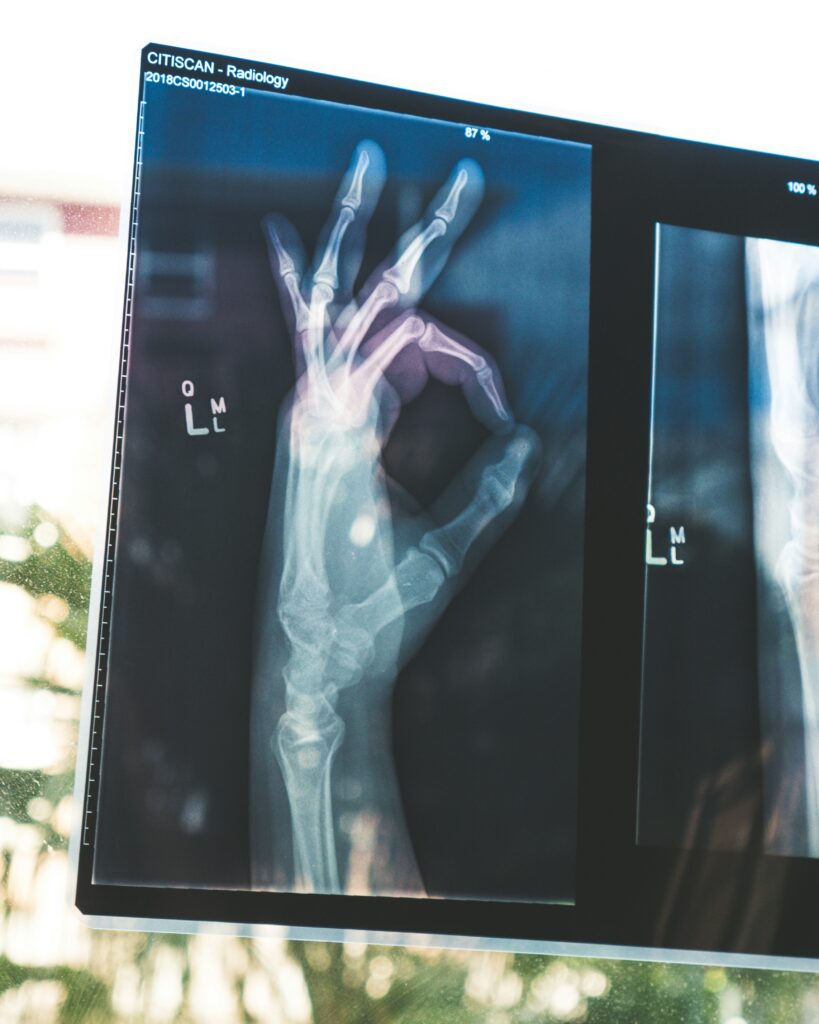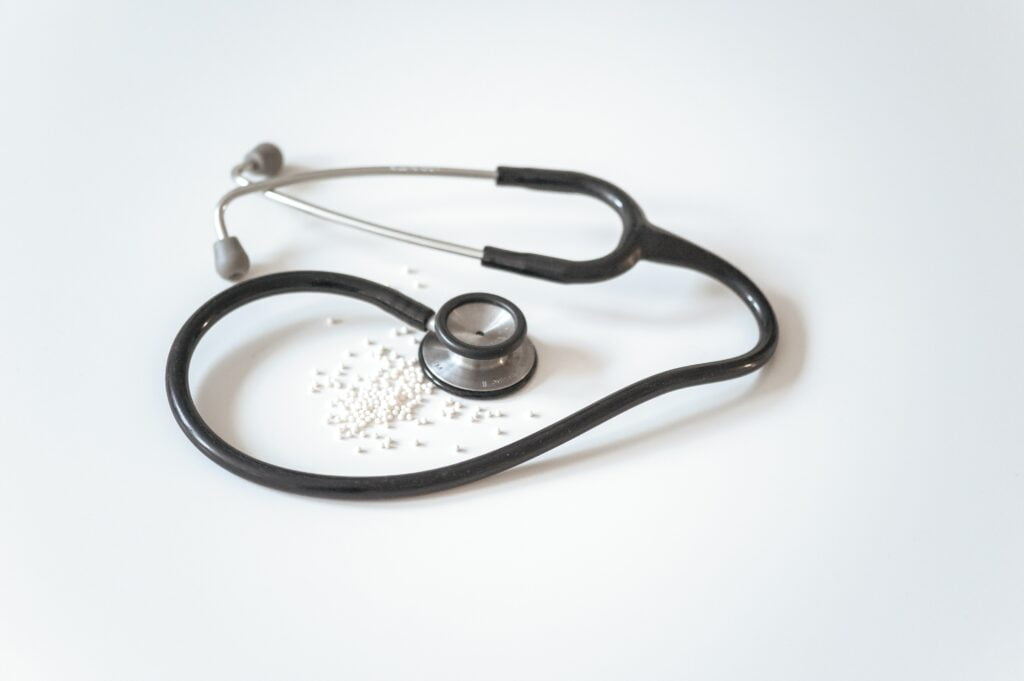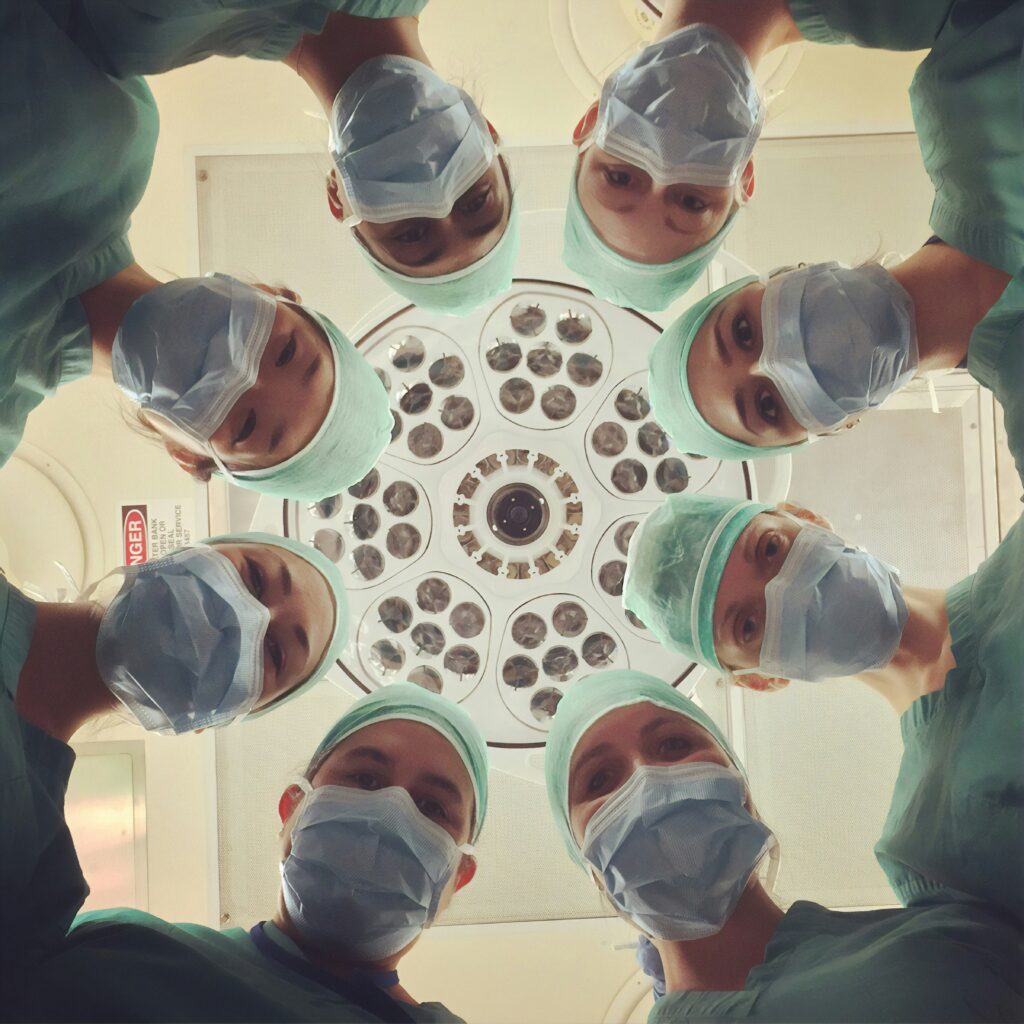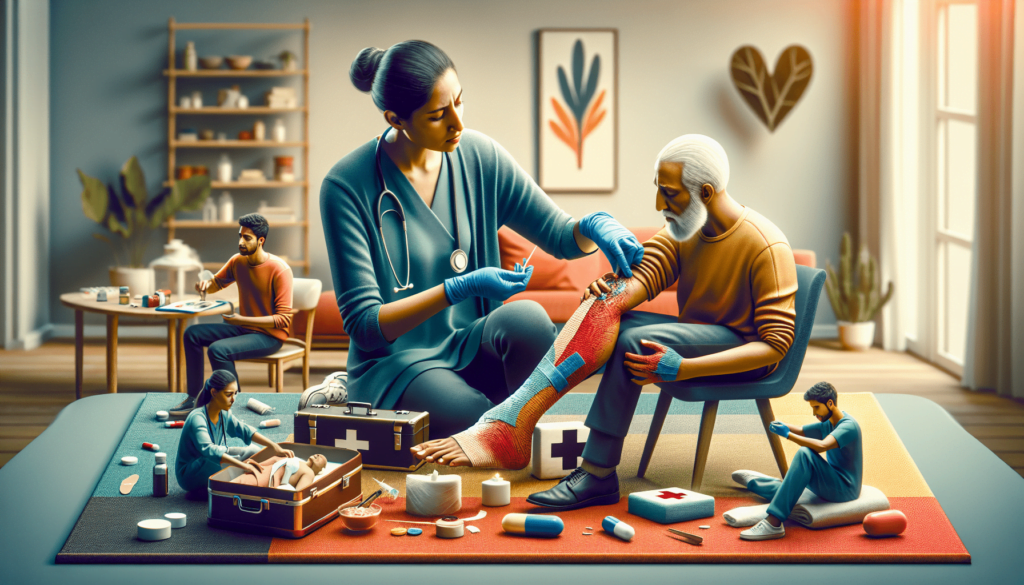Many individuals often find themselves faced with the daunting task of handling minor medical emergencies without professional assistance. Whether it be a minor cut, burn, or sprain, knowing how to effectively manage these situations can make all the difference in preventing further harm or complications. This article aims to provide practical guidance and essential tips on how to confidently and effectively handle minor medical emergencies on their own, offering advice on initial assessment, basic first aid techniques, and when to seek professional medical attention.
Table of Contents
How Do I Handle Minor Medical Emergencies On My Own?
Cuts and Scrapes
When faced with a cut or scrape, the first step is to clean the wound thoroughly. This can be done by gently rinsing it under running water. It is important to remove any dirt or debris from the wound to prevent infection. Once the wound is clean, it is crucial to apply pressure to stop the bleeding. This can be achieved by using a clean cloth or sterile gauze and applying steady, firm pressure to the area.
After the bleeding has stopped, it is essential to cover the wound with a sterile bandage. This helps protect the wound from further contamination and promotes healing. Additionally, keeping the wound covered can help reduce pain and discomfort. It is important to change the bandage regularly, especially if it becomes wet or dirty. This helps prevent infection and allows for proper wound healing.
While caring for a cut or scrape, it is essential to watch for signs of infection. These signs may include increased redness, swelling, warmth, or drainage from the wound. If any of these symptoms develop, it is advisable to seek medical attention promptly. Infections can lead to further complications and may require antibiotic treatment. By following these steps, one can effectively handle minor cuts and scrapes at home.
Bruises and Swelling
When dealing with bruises and swelling, the immediate step is to apply a cold compress to the affected area. The cold temperature helps constrict blood vessels, reducing swelling and minimizing the severity of the bruise. A bag of ice wrapped in a thin cloth or a cold gel pack can be used as a cold compress. It is important to apply the cold compress for about 15 to 20 minutes at a time, with breaks in between to prevent skin damage.
Elevating the affected area can also aid in reducing swelling and promoting healing. By raising the injured limb above the level of the heart, blood flow to the area is improved, helping to reduce swelling. This can be achieved by propping up the limb with pillows or using a sling if necessary. Resting and avoiding putting pressure on the area can further aid in the healing process.
In some cases, over-the-counter pain relievers may be necessary to alleviate discomfort associated with bruises and swelling. Medications such as acetaminophen or ibuprofen can provide temporary relief. However, it is important to follow the dosage instructions and consult a healthcare professional if needed.
After 48 hours, applying a warm compress to the affected area can help improve blood circulation and aid in the healing process. This can be done by using a warm towel or a heating pad on a low setting. It is crucial to be cautious and prevent burns by ensuring the compress is at a comfortable temperature before applying it.

Burns
In the event of a burn, it is crucial to remove the source of the burn immediately to prevent further injury. This could involve extinguishing flames or removing the part of the body in contact with the heat source. Once this step is completed, cooling the burned area is vital to minimize tissue damage and alleviate pain. This can be achieved by running cold water over the burn for at least 10 minutes. It is essential to avoid using ice or very cold water, as this can cause additional damage to the skin.
After cooling the burn, covering it with a sterile non-stick dressing helps protect the area from infection and facilitates the healing process. These dressings are designed to prevent sticking to the wound, allowing for easy removal during dressing changes. Additionally, they create a barrier against bacteria and other contaminants. It is important to choose a dressing that is appropriate for burn wounds and change it regularly according to the healthcare professional’s recommendation.
When experiencing pain from a burn, over-the-counter pain relievers can be taken to manage discomfort. Medications like acetaminophen or ibuprofen can be effective in reducing pain and inflammation. However, it is crucial to consult a healthcare professional if the burn is severe or covers a large area of the body.
For severe burns, seeking medical attention promptly is essential. Severe burns may involve large blisters, charring of the skin, or affect vital areas of the body. In such cases, medical professionals can provide appropriate treatment, such as pain management, wound care, and potentially surgical interventions if necessary.
Sprains and Strains
When dealing with a sprain or strain, it is crucial to rest the injured area and avoid any activities that may worsen the condition. This allows the affected ligaments or muscles to heal properly. Applying ice to the injured area is also important to reduce swelling and alleviate pain. Cold therapy can be applied using an ice pack wrapped in a thin cloth, directly to the injured area for about 15 to 20 minutes at a time, with breaks in between. It is crucial to avoid applying ice directly to the skin to prevent damage.
Compressing the injured area with an elastic bandage can provide stability and help reduce swelling. The bandage should be snug but not too tight, as excessive pressure can impede blood flow. Elevating the injured limb above the level of the heart can further aid in reducing swelling by improving blood circulation.
To allow for proper healing, it is important to avoid using the injured area for a few days. This includes refraining from activities that may place strain or stress on the affected area. Depending on the severity of the injury, a healthcare professional may recommend physical therapy exercises or other rehabilitation methods to regain strength and mobility.

Nosebleeds
In the event of a nosebleed, it is important for the affected individual to sit up straight and lean slightly forward. This helps prevent blood from flowing down the throat, which can lead to choking or swallowing blood. By pinching both nostrils together, breathing through the mouth becomes easier, allowing the individual to stay calm while waiting for the bleeding to stop.
Applying a cold compress to the bridge of the nose can also help constrict blood vessels and reduce bleeding. The cold temperature helps slow down blood flow to the area, aiding in the cessation of the nosebleed. It is crucial to avoid blowing the nose or picking at any clots that may have formed, as this can disrupt the clotting process and prolong the bleeding.
If the nosebleed persists for more than 20 minutes or is recurrent, it is advisable to seek medical help. Persistent nosebleeds may indicate an underlying condition or require medical intervention to control and stop the bleeding effectively.
Insect Bites and Stings
When dealing with insect bites and stings, the first step is to wash the affected area with mild soap and water. This helps remove any venom or irritants that may be present on the skin. After cleaning the area, applying a cold compress can help reduce swelling and alleviate discomfort. Cold therapy can be achieved by using ice wrapped in a thin cloth or a cold gel pack applied to the affected area for short durations.
Over-the-counter antihistamines or hydrocortisone cream can be used to relieve itching caused by insect bites and stings. These medications help reduce allergic reactions and provide temporary relief. However, it is important to avoid scratching the bite or sting, as this can lead to further skin irritation and potential infection.
For severe allergic reactions, seeking immediate medical attention is crucial. Symptoms of a severe allergic reaction may include difficulty breathing, swelling of the face or throat, or dizziness. In such cases, a healthcare professional can administer appropriate medications, such as epinephrine, to counteract the allergic response. It is important to inform healthcare providers about any known allergies to ensure prompt and effective treatment.

Allergic Reactions
When experiencing an allergic reaction, the first step is to identify and remove the allergen if possible. This can involve avoiding certain foods or substances that trigger the allergic response. In case of mild allergic reactions, taking an over-the-counter antihistamine can help alleviate symptoms such as itching, sneezing, or rash. Antihistamines work by blocking the effects of histamine, a chemical released during an allergic reaction.
However, if an allergic reaction is severe or accompanied by symptoms such as difficulty breathing, swelling of the face or throat, or a rapid heartbeat, immediate medical help should be sought. Severe allergic reactions, known as anaphylaxis, are potentially life-threatening and require prompt intervention. Individuals at risk of severe allergic reactions should carry an epinephrine auto-injector with them at all times. This device administers a dose of epinephrine, a medication that counteracts the allergic response.
Informing people around you about your allergies is essential, especially if you are at risk of severe allergic reactions. This allows them to be aware of the potential triggers and can aid in seeking medical assistance in case of an emergency.
Fainting or Loss of Consciousness
If someone faints or loses consciousness, the immediate step is to lay the person down on their back. This helps ensure a clear airway and prevents the risk of injury from falling. Elevating their legs slightly above the level of the heart can increase blood flow to the brain and often helps the person regain consciousness. It is crucial to loosen any tight clothing, particularly around the neck, chest, or waist, which may restrict breathing or blood circulation.
Checking for breathing and a pulse is important to assess the person’s vital signs. If the person does not regain consciousness within a minute or two, or if they are not breathing or have no pulse, it is crucial to call for medical help immediately. Starting cardiopulmonary resuscitation (CPR) may also be necessary in such cases until medical professionals arrive.

Choking
If someone is choking and unable to breathe or speak, it is essential to encourage them to cough forcefully. Coughing is the body’s natural reflex to clear the airway. However, if the person cannot cough or breathe, it may be necessary to perform back blows and abdominal thrusts to dislodge the object blocking the airway.
To perform back blows, the rescuer stands slightly to the side and behind the person. The rescuer then delivers firm blows between the person’s shoulder blades using the heel of their hand. If back blows do not relieve the obstruction, abdominal thrusts can be performed. This involves standing behind the person, placing a fist just above the navel, and grasping it with the other hand. The rescuer then gives quick, inward and upward thrusts until the object is expelled or until the person can breathe again.
If the person still cannot breathe or loses consciousness, it is crucial to call emergency services immediately. Learning the Heimlich maneuver, a technique used to clear a blocked airway, can be valuable in such choking emergencies. By receiving proper training, individuals can confidently perform this life-saving maneuver when necessary.
Preventing choking incidents is essential by cutting food into small pieces and encouraging thorough chewing before swallowing. It is important to be cautious, particularly with small children, to avoid foods that pose choking hazards such as hard candies, nuts, or large chunks of food.
Eye Injuries
When dealing with eye injuries, it is important to exercise caution and avoid rubbing or touching the injured eye. Rubbing the eye can worsen any damage and potentially introduce infection. If necessary, flushing the eye gently with clean water or saline solution can help remove any foreign objects or irritants. It is crucial to ensure the water or saline is clean to avoid introducing further contaminants.
Covering the injured eye with a clean cloth or sterile dressing can provide protection and prevent additional injury. Avoiding applying any pressure to the eye is important in order to prevent further damage to the delicate structures. Seeking immediate medical attention is vital for serious eye injuries, such as cuts, chemical exposure, or objects embedded in the eye. Eye injuries require specialized care to prevent long-term complications and preserve vision.
Handling minor medical emergencies on one’s own requires knowledge and careful execution of appropriate procedures. While these measures can aid in managing minor ailments and injuries, it is important to remember that seeking medical attention is necessary in certain situations. Prompt medical intervention can help prevent complications, ensure proper treatment, and facilitate a faster recovery. It is advisable to consult a healthcare professional for a thorough evaluation and tailored advice based on individual circumstances.

Related site – First Aid Tips: Treating Minor Injuries at Home
